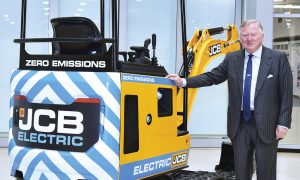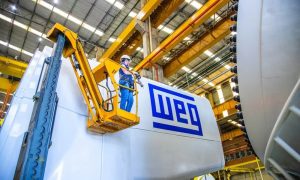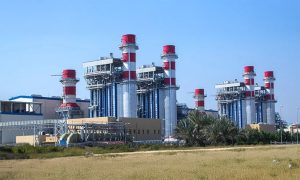JCB’s Loadall telescopic handler hits 40-year milestone
Originator of telehandler concept reaps the rewards of its innovation with more than 220,000 units sold to date and daily output at highest level since 1977 launch

Global construction machinery major JCB is celebrating the 40th anniversary of its Loadall telescopic handler, which was first launched in October 1977.
The machine was one of the first to mechanise lifting and loading tasks on building sites more usually carried out manually. It also quickly proved useful in agriculture and went on to revolutionise materials handling tasks on farms, stacking bales, loading muck and shovelling grain, replacing rudimentary tractor mounted hydraulic loaders. A statement from JCB said the company has sold more than 220,000 Loadalls to date, generating more than $9.2bn in sales – $5.9bn of which have been from machines the UK-based manufacturer has exported globally.
JCB added that the daily output of telehandlers at the global headquarters in Staffordshire, UK, is currently at its highest level since the launch, with the number of machines built expected to increase by 25% by the end of the year compared to 2016. As a testimony to the machine’s success, one Loadall rolls off JCB’s Rocester production line every six minutes and JCB’s telehandler division today employs more than 1,200 people.
“When we launched the Loadall in 1977, we sold just 64 machines that year but we were very confident that the telescopic handler would grow in popularity simply because it made jobs so much easier on construction sites and on farms,” said JCB chairman Lord Bamford.
“The concept soon took off and the faith we put in the telescopic handler four decades ago has been repaid. It’s wonderful to celebrate 40 years of success of the Loadall with production hitting historic levels. I’d like to congratulate everyone around the world who has contributed to this success over the past 40 years. We must now look forward to the next 40 years and build on what has been achieved so far.”
The JCB statement quoted 59-year-old Eddie Finney, a Loadall team leader at Rocester, as saying: “I started my JCB career in 1976 in the machine shop but the following year I transferred and started working on the Loadall assembly line. At the time there were only four Loadalls coming off the line every day. I can’t believe the volume we have now achieved 40 years later.”
It took almost 30 years for JCB to sell the first 100,000 Loadalls but it took less than 10 years for the next 100,000 to be sold, which the company said is testament to the growing importance of the product and JCB’s strength in this sector.
The company said that the public launch of the Loadall in 1977 was promoted under the banner of ‘Obsolescence Day is Coming’ as an indication that the new machine, with its ability to reach forwards and upwards, would render the masted forklift obsolete. The Loadall range has now grown to 34 base models with over 1,000 individual configurations.
According to JCB, among the fascinating facts about the Loadall is that its manufacture consumes more than 35,000 tonnes of steel a year. The welding done in the manufacturing process itself consumes more than 14.5 million metres of wire per year with robots handling 70% of chassis welds while skilled operators tackle hard-to-access welds. The painting facility for the Loadall uses 73,000 litres of primer and 50,000 litres of gloss paint per year.

























